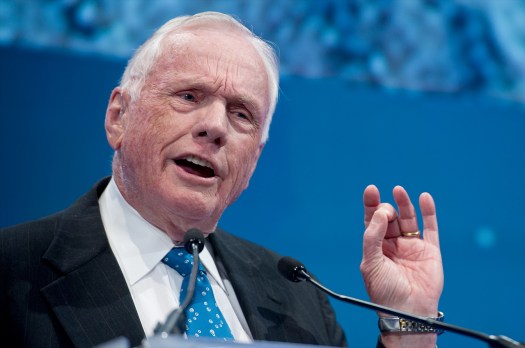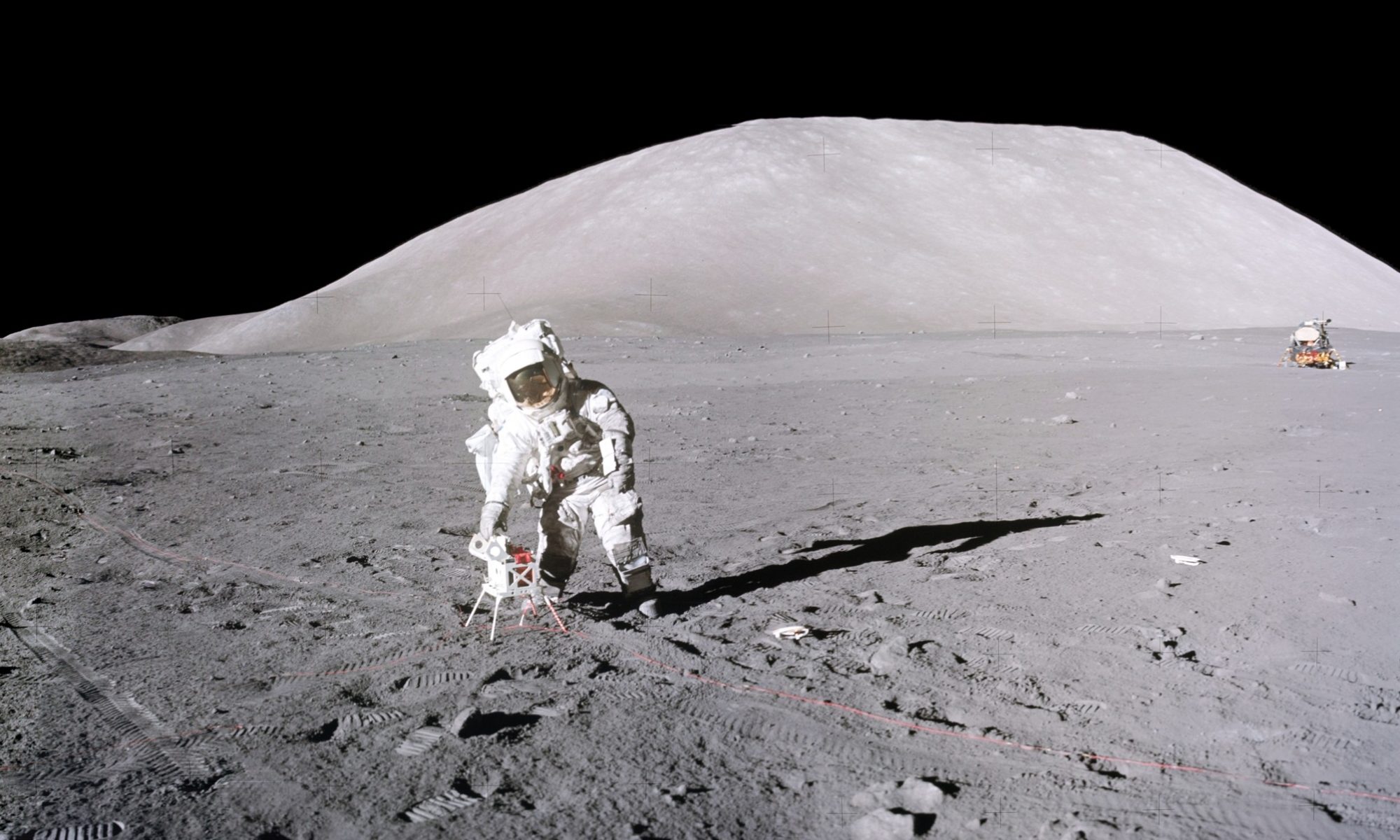
Neil Armstrong with the cable-operated Lunar Landing Trainer at Langley Field in the mid-1960s prior to his use of the later Lunar Landing Trainer Vehicle which had a jet engine. (NASA/Langley photo EL-1996-0023).
Neil Armstrong is a true national and international hero in the classic sense. His intellect, dedication and skills made him absolutely the best choice to be the first American and first human to step foot on the Moon in 1969 as Commander of Apollo 11. Quiet, thoughtful celebration of his life honors the man and his achievements.
Armstrong conducted himself at the highest levels of professionalism – quick to make good decisions in service to his country, as a test pilot, and as an explorer in the best traditions of Lewis and Clark. He often stated, however, that our successes in these difficult arenas only come from the magnificent efforts of hundreds of thousands of others.

The only direct photo of Neil Armstrong on the lunar surface. He is packing 17 scoops of bulk lunar soil into a rock box placed on the table of the Modularized Equipment Stowage Assembly (MESA) of the LM. (NASA photo AS11-40-5886).
One of my many favorite Armstrong memories from Apollo relates to a spur of the moment decision he made late in his walk on the Moon. We all trained to focus on collecting the greatest variety of Moon rocks possible in the time available. But, having already quickly collected one of the finest sets of lunar samples, Neil thought the partially filled rock box needed something more. He rapidly filled the box with a large amount of the Moon’s soil. This soil became one of the most important samples ever returned from the Moon. Neil’s 30 minutes of sampling decisions at Tranquillity Base remain the most productive half hour in lunar exploration.

Neil Armstrong speaking at a celebration dinner at Ohio State University on Feb. 20, 2012, in Columbus, Ohio, 6 months before his death (NASA/Bill Ingalls).
Neil was a gifted speaker, historian and professor. He did not give a large number of speeches or interviews, but all had been extensively researched and delivered with remarkable clarity and insight. Neil fascinated audiences with his clear articulation of historical events and the relation of technology, aeronautics and space to human activities in the past and future.
I had the great privilege to have known Neil as both a colleague and friend. Teresa and I give our heartfelt condolences to the extended Armstrong family and to his legion of friends, colleagues, and others so profoundly influenced by the life of Neil Armstrong. His historical insights, good nature and extraordinary professionalism will be missed more than my words can convey.
